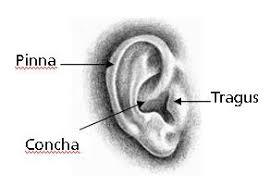Self Care in Earwax Management
What is earwax?
Earwax is properly known as cerumen. It is a natural substance secreted in the ear canal. It protects the lining of the ear canal, traps dirt and dust and protects the ear from infection. It is continuously produced and is gradually moved towards the entrance of the ear by the self-cleaning mechanism of the skin and by the action of muscles used in chewing and talking.
The colour, consistency and amount of earwax produced by individuals vary widely. Wax may appear to be dry and flaky, or crumbly in consistency. It can be honey coloured or dark brown. When it is hard it can become quite firmly attached to the underlying skin. You cannot prevent earwax, but you can keep using eardrops to soften it. These treatments will help it fall out on its own and should prevent blocked ears.
Causes of Earwax build-up
You might have earwax build up because:
- You have more wax in your ears – some people do naturally.
- You have hairy or narrow ear canals.
- Age – wax gets harder and more difficult to fall out.
- Hearing aids, earplugs and other things you put in your ear – these can push the wax further in and prevent earwax from falling out naturally.
- Cleaning attempts - using cotton buds, matchsticks and hair clips to try to clean out the ear canals is one of the most common causes of impacted wax. It causes the wax to be forced down the canal and form a hard dry plug against the eardrum. These instruments can cause damage to the skin lining of the canal.
How to tell if your ear is blocked with earwax
You can experience the following symptoms:
- Earache.
- Difficulty hearing.
Once the earwax is removed, these symptoms usually improve.
Treatment
The use of Olive Oil has been clinically proven to be safe and an effective treatment for the treatment of ear wax. The drops should be instilled twice a day for 14 days. In many cases this is all that is needed. Do not put cotton wool into your ears, as this will absorb the oil.
A pharmacist can also help in providing advice and suggesting treatments. They may recommend chemical drops to dissolve the earwax, which can be purchased over the counter.
How to instill eardrops
When using eardrops:
- Lie down on your side with the affected ear facing up.
- Drop 2 or 3 drops of oil or other drops (at room temperature) - into the ear canal and massage the tragus just in front of the ear and pull the pinna backwards and upwards. This enables the drops to run down the ear canal.
- Stay lying down for 5 minutes and then wipe away any excess oil.
- Do not leave cotton wool at the entrance to the ear.
- Repeat the procedure with the opposite ear if necessary.

What happens if my symptoms presist?
If your symptoms persist, see your GP or Practice Nurse. They may offer ear irrigation to remove the wax although this is not recommended for everyone. If this is the case, you may be referred to the Ear, Nose and Throat (ENT) department at Huddersfield Royal Infirmary, or Calderdale Royal Hospital where a procedure called microsuction is available.
It is not recommended that these procedures are performed on a regular or routine basis.
Some people become accustomed to attending regularly for ear irrigation or microsuction, believing it is necessary to prevent them experiencing hearing loss when this is often not the case. The only reason for carrying out these procedures for the treatment of earwax, is when hearing is reduced or there is pain due to wax being impacted.

















